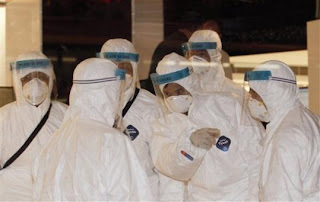Sri Lanka's military said Thursday it had brushed off a Tamil Tiger counterattack by killing 30 guerrillas, pinning the rebels in a rapidly shrinking area and moving closer to ending the quarter-century-long civil war.
Ethnic Tamil lawmakers, meanwhile, rejected the president's invitation for talks, urging the government to first ensure the safety of civilians trapped in the war zone.
The latest fighting took place on the edge of an enclave controlled by the rebels, formally known as the Liberation Tigers of Tamil Eelam, or LTTE, in Sri Lanka's war-ravaged north. The rebels tried to attack government lines at the village of Iranaippalai, the military said.
"We successfully repulsed the attack and over 30 LTTE cadres were reported killed," military spokesman Brig. Udaya Nanayakkara said.
Nanayakkara said a number of soldiers were wounded in the battle, but did not give details.
Access to the war zone is restricted and it was not possible to confirm the report.
The rebels have been battling since 1983 for a separate Tamil state in the north and east of Sri Lanka where it once controlled a large swath of territory, but a series of major victories by government forces in recent weeks has pushed them into a small pocket on the coast.
The rebel holdouts — along with tens of thousands of terrified civilians — are confined to just 8.4 square miles (21 square kilometers) of jungle and beach on the northeastern coast.
President Mahinda Rajapaksa invited the Tamil politicians for talks Thursday evening to discuss the situation in the north. The Tamil National Alliance, the largest political party for ethnic Tamils, said it told Rajapaksa it would not participate until the government halts its military campaign and gives more food and medicine to people trapped in the war zone.
"Any political dialogue can be meaningful only when the humanitarian crisis comes to an end," TNA lawmaker Rajavarothayam Sambanthan told a news conference, adding that about 50 civilians are killed in the fighting daily.
The United Nations and European Union have recently voiced concern over the fate of civilians in Sri Lanka's conflict.
The government has rejected criticism it has not done enough to help them, and Minister of Human Rights and Disaster Management Mahinda Samarasinghe said Thursday that "sufficient food and medical supplies" had been sent to help the people. The government last week sent 10 tons of medicine — enough for two weeks, he said.
"We will ensure that there will be no shortage," he told a news conference.
John Holmes, the U.N.'s top humanitarian official, said Thursday that the international organization estimates between 150,000 and 190,000 civilians are trapped by the fighting and cannot escape, resulting in dozens of deaths each day.
The government says the number is 50,000 to 60,000, and accuses the rebels of using them as human shields in a bid to avoid defeat.
U.S. diplomat Rosemary DiCarlo said the U.S. has urged Sri Lanka's government to cease shelling in areas where there are large numbers of civilians, including hospitals.
"We've had promises, but we need to see results," she said. "The government of Sri Lanka must pay more attention to protecting the civilians in this conflict."
Sri Lanka's U.N. ambassador Hewa M.G.S. Palihakkara told reporters he would recommend his government consider a pause in fighting if the rebels are cooperative.
"If the LTTE's ready to let these people go, I will posit it to my government to let these people go," Palihakkara said.
The military says more than 55,000 civilians have escaped since the beginning of January.
All are being put into temporary camps, and Samarasinghe said the government decided to transfer the management of camps from the military to a civilian agency, upon the recommendation of Holmes.
Red Cross and ICRC and UNHCR officials will be present when people are screened to make sure they are not rebels, he said.
The rebels could not be reached for comment, because communication with their stronghold has been severed.
ForMoreInfo: http://www.google.com/hostednews/ap/article/ALeqM5gVoaDFmbCYS-Usz9ACDRIengj21QD97649OG1


